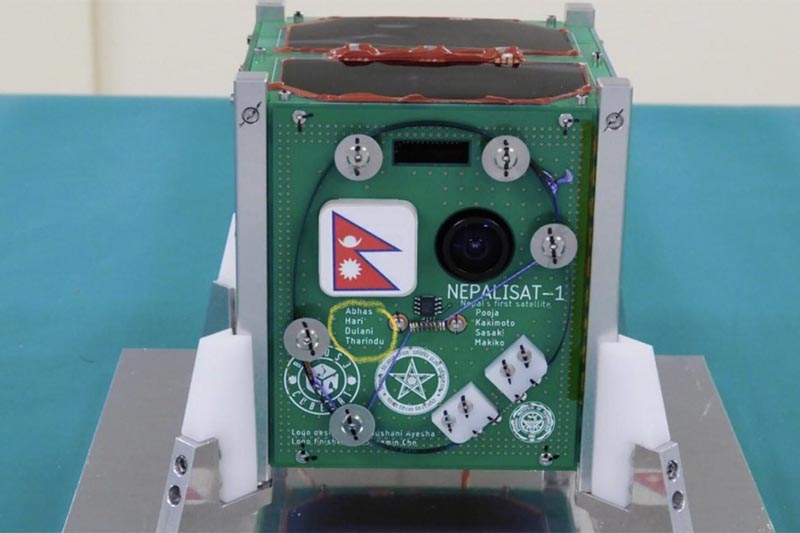Nepal’s first satellite to be deployed in space on June 17
- Japan Aerospace Exploration Agency will facilitate live broadcast of the event
Kathmandu, May 21
The date for deployment of the country’s first satellite, NepaliSat-1 into space from International Space Station is set for June-17. The satellite will start revolving around the earth immediately after deployment.
A commercial cargo spacecraft carrying NepaliSat-1, had reached the International Space Station travelling for 72 hours on April-21. It has remained inside the cargo ship at the ISS since then.
The spacecraft was launched into space by Antares rocket from NASA’s Wallops Flight Facility in the United States. The satellite after deployment will start revolving around the earth, gathering geographical information of the country.
Nepal Academy of Science and Technology confirming the deployment date of the satellite, said they would have a grand celebration on the day, broadcasting live video of the satellite being deployed in space.
Rabindra Dhakal, chief of Faculty of Technology at NAST, said Japan Aerospace Exploration Agency will facilitate live broadcast of the satellite deployment. “JAXA has confirmed they will send two envoys to NAST to facilitate a live broadcast of the event.” Similarly, NAST also informed that Sunil Babu Shrestha Vice-chancellor of NAST, and Minister of Education Science and Technology Giriraj Mani Pokhrel are scheduled to travel to JAXA to witness live deployment of the satellite.
Two Nepali scientists — Aabhas Maskey and Hariram Shrestha — who are studying at Japan’s Kyushu Institute of Technology — developed the satellite in collaboration with NAST.
NepaliSat-1 is a cube satellite that weighs 1.3 kilograms. Once released into orbit, the satellite will revolve around the earth every 90 minutes. The orbit lies around 400 kilometres away from the earth. The satellite is expected to take pictures of Nepal for six to 10 minutes during each revolution.
NAST has claimed that they will build a ground station for it before the satellite is deployed into space. “We are in the final stage of installing an antenna and other required technologies to receive data sent from the satellite. We are confident that the ground station will be fully functional before NepaliSat-1 starts sending data,” Dhakal said.






